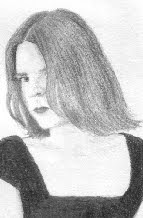 New York City, 1909: Sigmund Freud has arrived, with Carl Jung in tow, to lecture at Clark University, which has sent budding psychoanalyst Stratham Younger to accompany its guest. Two sets of circumstances soon arise to dampen their enthusiasm. Someone starts attempting to sabotage not only the forthcoming English translation of Freud's work, but the entire standing of psychoanalysis. And someone is attacking beautiful young women.
New York City, 1909: Sigmund Freud has arrived, with Carl Jung in tow, to lecture at Clark University, which has sent budding psychoanalyst Stratham Younger to accompany its guest. Two sets of circumstances soon arise to dampen their enthusiasm. Someone starts attempting to sabotage not only the forthcoming English translation of Freud's work, but the entire standing of psychoanalysis. And someone is attacking beautiful young women.
The first victim is dead. The second is suffering the loss of both her voice and her memory. With Freud’s encouragement, Younger takes on Nora Acton as a patient and tries to uncover the memories repressed by her conscious mind. When the clues start pointing to one of the city’s most influential men, the analysts and the police alike will find a difficult job has become that much harder.
Between the time period, the setting, and the involvement of psychiatry, it’s impossible not to draw comparisons with The Alienist. Which is unfortunate, because I greatly preferred The Alienist.
Which is not to say that The Interpretation of Murder is a bad book. It has several good points, chief among them Detective Jimmy Littlemore. Dismissed by the coroner as an idiot, he does more work towards solving the case than all the shrinks combined. I liked him, and I liked watching him put the pieces together through hard work and simple logic. On the history of New York City and psychoanalysis it’s educational, which is a positive in my view even if it does read a bit like a textbook at times. (And even if, during my two years of high school psychology, I never thought much of psychoanalysis.) Younger, a Shakespeare fan, comes up with a new interpretation of Hamlet which has me itching to re-read the play. (No ... no ... must get TBR pile down to the top of the box first...) And the last 150 pages had me hooked.
The first 350 ... not so much. Younger's treatment of Nora is the only connection between the attacks and the analysts, yet the whole premise of the novel is to provide a fictional explanation for Freud’s dislike of America. It hops between too many viewpoints, including the omniscient history-lesson-dispensing one which seems to be talking from the present day. I didn’t warm up to any character other than Littlemore, and beyond intellectual curiosity didn’t much care about whodunnit. (The analysts were more concerned with the sabotage, and if multiple principle characters don’t care about something, why should the reader?)
And speaking of characters... I hate Rubenfeld’s way with women. There are only two of importance: Nora Acton is beautiful and neurotic, Clara Banwell is beautiful and manipulative. (In both cases, emphasis on the beautiful.) And that’s about the sum total of the characterisation of those two ladies. Not that the men were much better, but at least their stunning good looks - if they had any - weren’t described ad tedium. Or in the case of the attacks, ad nauseum. There are far too many adjectives lavished upon the beauty of the victims both during and after, and since the scenes aren’t from the perspective of any particular character, it feels as if it is the author who’s seeking to present these bound and tortured girls as objects of desire. The author being male just adds to the creepiness. If there had been much more of it, I couldn’t have continued reading.
Rating: C














